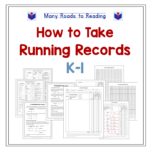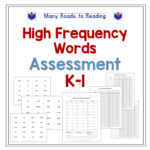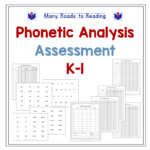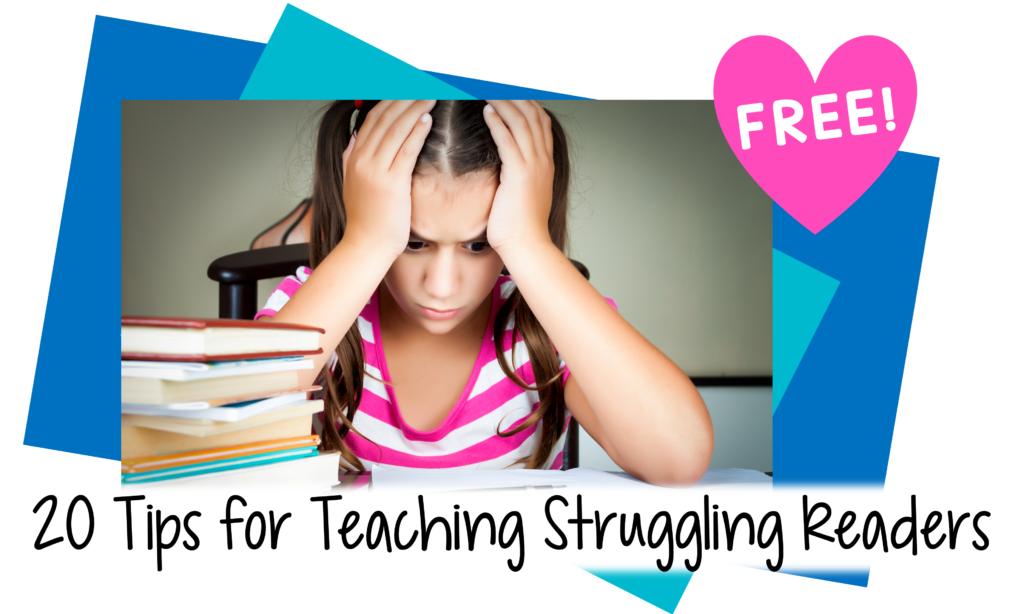
Many teachers cringe when they hear the word testing, mainly because so much of it is mandated at the national, state, and district level. Weeks of classroom time have been stolen to both prepare for and administer high stakes standardized (norm-referenced)[i] tests with little or no benefit to our students. And, for some of us, our jobs have depended on our students doing well on these time-consuming tests. Talk about stress!
But how about assessments that immediately help us teach better and therefore help our kids, too? These are the best tests!
I actually look forward to this kind of testing—formative testing that provides me with a gold mine of rich data to shape my teaching, testing that points to instructional priorities, helps with grouping, and diagnoses individual student strengths and weaknesses.
Did you know that you can create your own battery of the best kind of tests? I want to tell you how my colleagues and I came up with our testing system. Feel free to use it as a model or, if you prefer, use the links to check out the assessments I offer on Teachers Pay Teachers.
Start the Year with the Best Tests
When I was a Reading Recovery Teacher (RRT), the 1st grade classroom teachers and RRTs set up a wonderful testing arrangement where we spent the first one or two weeks of school assessing the literacy skills of all the students in the grade. Initially, we gave just running records, but over the years, we expanded the test battery to include letter knowledge, writing vocabulary, high frequency words, and phonetic decoding assessments.
At first, we worried about delaying guided reading while we tested. But the information we obtained from the assessments turned out to be so valuable that we no longer fretted about postponing reading instruction.
 We were able to form guided reading groups more easily by pinpointing the needs of the students, and the test results even informed our whole-class instruction. For example, we learned which letters had to be taught and which high frequency words we could put on the word wall. This meant that we could hit the ground running with our reading instruction. Eventually we added our own summative tests at the end of each report period that we called benchmark tests. More about that in a future post, perhaps.
We were able to form guided reading groups more easily by pinpointing the needs of the students, and the test results even informed our whole-class instruction. For example, we learned which letters had to be taught and which high frequency words we could put on the word wall. This meant that we could hit the ground running with our reading instruction. Eventually we added our own summative tests at the end of each report period that we called benchmark tests. More about that in a future post, perhaps.
I loved this testing period as a Reading Recovery teacher and early literacy specialist. It meant that I could get to know my students even before I began working with them. Even as a 2nd grade classroom teacher, I started the year with reading and writing assessments, both to set up small groups and to shed light on any difficulties some of my students might be having. You can use this testing arrangement in kindergarten, too.
Running Records
This isn’t the place to explain how to give running records, but if you need help in that area, try my TpT resource. Although that resource does not provide leveled books, it does offer a running record form, detailed coding and scoring directions, and tips for analyzing the results.
 At the beginning of the year, you want to find out the highest instructional level each child can read on. For me, that means they can read a leveled text at 90% accuracy, but some teachers prefer to use 95% as a cut-off point. From these results, you can group your students for guided reading.
At the beginning of the year, you want to find out the highest instructional level each child can read on. For me, that means they can read a leveled text at 90% accuracy, but some teachers prefer to use 95% as a cut-off point. From these results, you can group your students for guided reading.
But don’t just look at the scores. You also want to look for evidence of processing. Has the youngster mastered voice-print matching? If so, how is his fluency? What words can the child recognize “at sight”? Is there any evidence of using phonetic decoding? Is the student cross checking and self-correcting?
Naturally, it depends on the developmental level how much you can learn from a child’s oral reading. For example, it is normal for an emergent reader to exhibit very little decoding, while we would expect a 2nd grader to have a stronger awareness of text structure than a 1st grader.
By carefully listening to and annotating a child’s oral reading, and by thoroughly analyzing your notations, you can find out about many of these aspects of a child’s oral reading:
- Attention to print
- Overreliance on picture clues, language patterns
- Decoding ability
- Recognition of nonphonetic words
- Sense of language, syntax
- Expression and fluency
- Cross-checking
- Self-monitoring, self-correcting
- Comprehension, orientation to meaning
- Vocabulary knowledge
- Morphemic awareness (word parts)
- Story sense, text structure
- Frustration tolerance, openness to challenge
- Learned helplessness, passive learning
Letter Knowledge
A simple letter naming test shows the teacher which letters students know or still need to learn. The same lists can also be used to test letter sound knowledge. Make a list of all the uppercase and lowercase letters (mixed up—not in alphabetical order), as well as a student answer sheet. If you want, create a code so that you can use the same answer key for letter names and sounds. A class chart is useful for compiling the results.
Writing Vocabulary
I learned about testing a child’s writing vocabulary from Reading Recovery and, specifically, Marie Clay’s Observation Survey. One benefit of this assessment is that you can give it to the whole class at the same time. You simply have the students write all the words they can think of in 10 minutes. You may want to use privacy shields to make sure the kids don’t copy each other, and be sure to cover up any words in the room.
You can learn a lot about the children’s responses to this challenge. Do they know how to write their own name? Family names? High frequency words? Color words? Are they using phonetic spelling? How is their letter formation? Did they write groups of rhyming words? It’s such a simple activity, and yet we can learn so much from it. If you give this test before your running records, you can even use the results to set up tentative guided reading groups, or to figure out your lowest reading group–in order to get started with them a.s.a.p!
High Frequency Words
 Developmentally, young children tend to learn to read whole words before they learn to decode words phonetically, which is a more analytical task. Make up a list of the first 10 to 20 high frequency words (e.g., said, come, is) that emergent readers usually learn or that they will first encounter in their books. You can also use spelling or word wall words from the previous year’s teacher. If a student attempts to decode a word, then you know she didn’t immediately recognize it, that it isn’t part of her sight vocabulary.
Developmentally, young children tend to learn to read whole words before they learn to decode words phonetically, which is a more analytical task. Make up a list of the first 10 to 20 high frequency words (e.g., said, come, is) that emergent readers usually learn or that they will first encounter in their books. You can also use spelling or word wall words from the previous year’s teacher. If a student attempts to decode a word, then you know she didn’t immediately recognize it, that it isn’t part of her sight vocabulary.
By combining the results of this type of assessment with the Writing Vocabulary Test you can determine which high frequency words are known or partially known by most or all of your students and determine which words to put on your word wall.
Phonetic Analysis
 Another informative assessment is to have the students read a list of rare phonetic words—words that they less apt to have seen in their books and would therefore have to decode somehow. We pick the words according to phonetic elements they have been exposed to in the previous grade: for us, this was CVC words with single consonants (bet, gas, pin). For you, it may be different.
Another informative assessment is to have the students read a list of rare phonetic words—words that they less apt to have seen in their books and would therefore have to decode somehow. We pick the words according to phonetic elements they have been exposed to in the previous grade: for us, this was CVC words with single consonants (bet, gas, pin). For you, it may be different.
Note how the students approach the words. Can they sound out the first letter? The end? How about the vowels? Can you tell how the children are trying to decode (by onset-rime or sound by sound)? What letter-sound correspondences can have they mastered or do they need? Add these conclusions to the class letter chart.
So Start the Year with the Best Tests
Not all tests have to cause stress. The best tests provide us with such valuable insights into our students that the time we spend administering them pays off right away.
I hope you will start off the year by trying at least some of these stress-free assessment ideas in your classroom, whether you use my resources or create your own. If you do, you will start the year with more knowledge about your students than ever before. You will be ready to target your instruction to the specific needs of individuals, with no time wasted. Assess without stress!

References
National Council of Teachers of English. 8/24/16. The Assessment Story Project: What We Learned from Teachers Sharing their Experiences with Literacy Assessment. Downloaded 7/16/17 from http://www.ncte.org/AssessmentStoryProject.
Michael McKenna and Steven Stahl. 2003. Assessment for Reading Instruction. New York: The Guilford Press.
[i] The word standardized is often mistakenly substituted for the term norm-referenced. Standardized means that the tests are administered and scored in a set manner. Norm-referenced refers to the scoring of tests according to a researched set of norms such as percentiles, grade equivalents, or stanines. Norm-referenced tests have to be standardized to ensure that the research was conducted consistently.



Leave a Reply